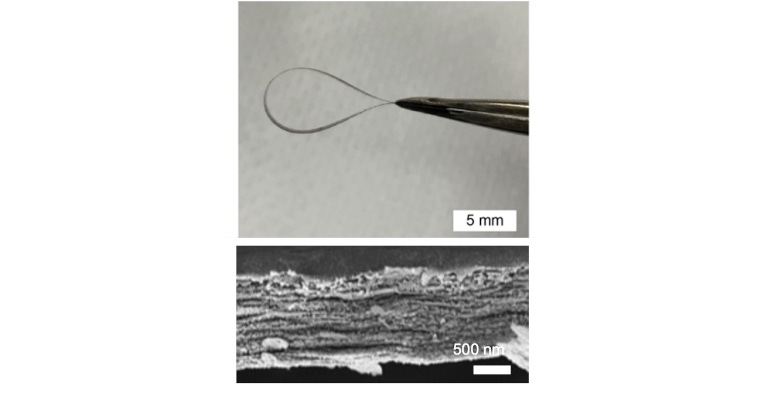A composite inspired by squid tentacles shows properties well-suited for applications as varied as sneaker insoles to circuit boards.
August 22, 2022

Researchers have taken inspiration from natural materials such as bone and mother-of-pearl to create a new layered composite that is both extremely flexible and tear-resistant. The material can be used in objects ranging from sneakers to circuit boards, they said.
A team from Penn State University created the layered 2D material using biomimetic proteins patterned on squid ring teeth, which are the circular appendages on the tentacles of squid that are used to grasp prey. The materials use a combination of a hard material—in this case, a transition metal carbide, nitride, or carbonitride such as graphene or a MXene—separated by layers of something to glue the layers together.
“Inspired by natural composites, we studied assembly of atomistically thin inorganic sheets with genetically engineered polymeric proteins to achieve mechanically compliant and ultra-tough materials,” researchers explained in an abstract for a paper published in the journal Proceedings of the National Academy of Sciences. “Although bare inorganic nanosheets are brittle, we designed flexible composites with proteins, which are insensitive to flaws due to critical structural length scale (∼2 nm).”
Composite Interface Makes a Difference
While large chunks of graphene or MXenes have bulk properties, the strength of 2D composites comes from interfacial properties, researchers said. However, traditional continuum does not explain why the materials not only are strong but also flexible as well, noted Melik Demirel, a chair in biomimetic materials and director of the Center for Advanced Fiber Technologies at Penn State.
Simulations of the material conducted by Demirel and his team suggest that the interface plays a key role, he said. The interface—containing a higher percent of the material composition—breaks in places when the material is under stress, while the material as a whole does not, researchers found.
"The interface breaks, but the material doesn't," Demirel explained. "We expected them to become compliant, but all of a sudden it is not only compliant, but super stretchy."
Moreover, the interfacial material used by the team can be modified by repeating sequences, so the properties of the material can be fine-tuned, he said."We can make it very flexible and very strong at the same time,” Demirel said.
Future Applications
Researchers published a paper on their work in the journal Proceedings of the National Academy of Sciences.
The team discovered that the materials can also have unique thermal conduction properties that spread heat in one direction more strongly than at 90 degrees, they reported. This makes the material well-suited for the insoles for running shoes, Demirel said.
"It could cool the foot and the repeated flexing would not break the insole,” he said.
Other applications of the material include flexible circuit boards, wearable devices, and other equipment that requires strength and flexibility, researchers said.
About the Author(s)
You May Also Like



